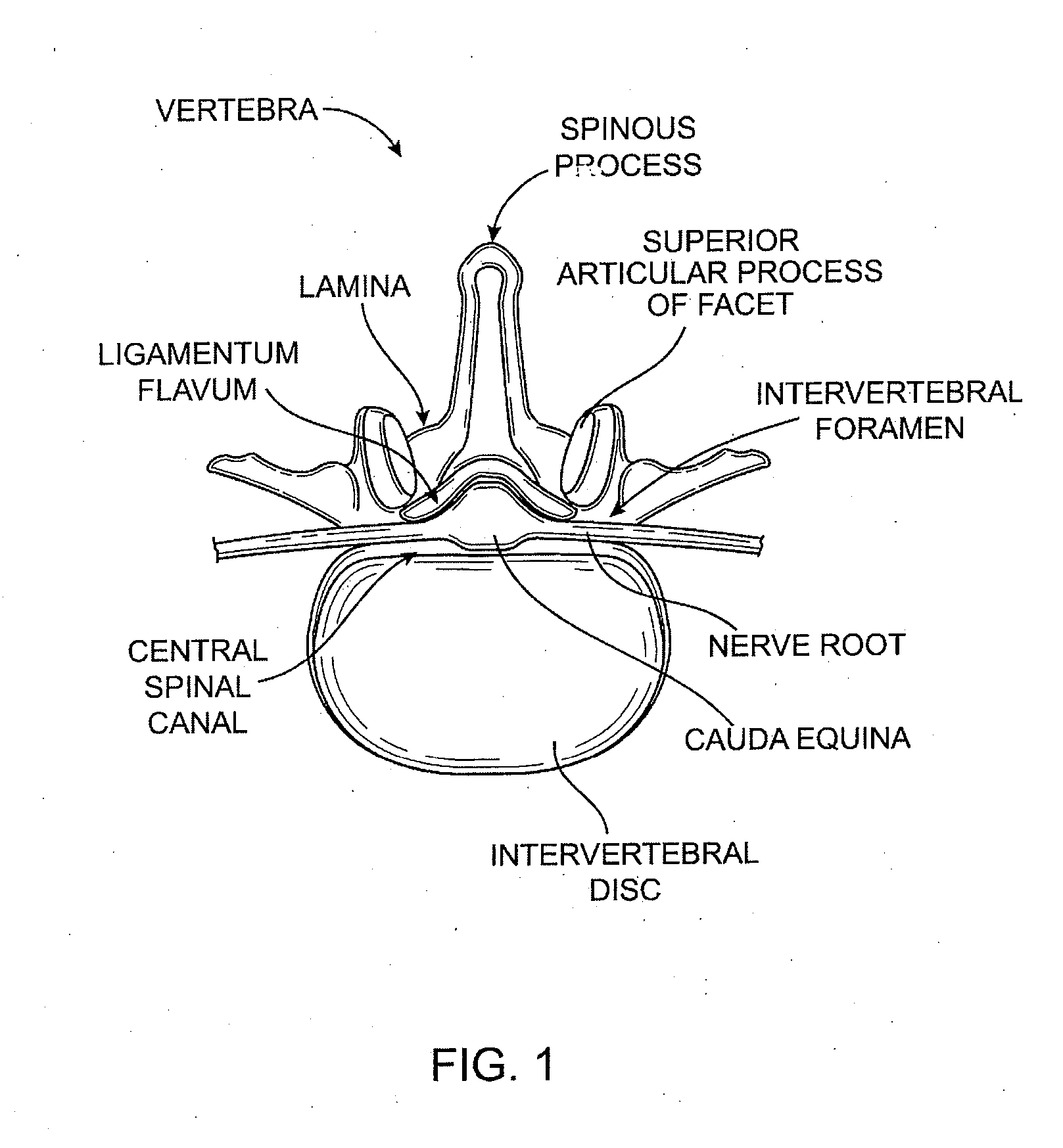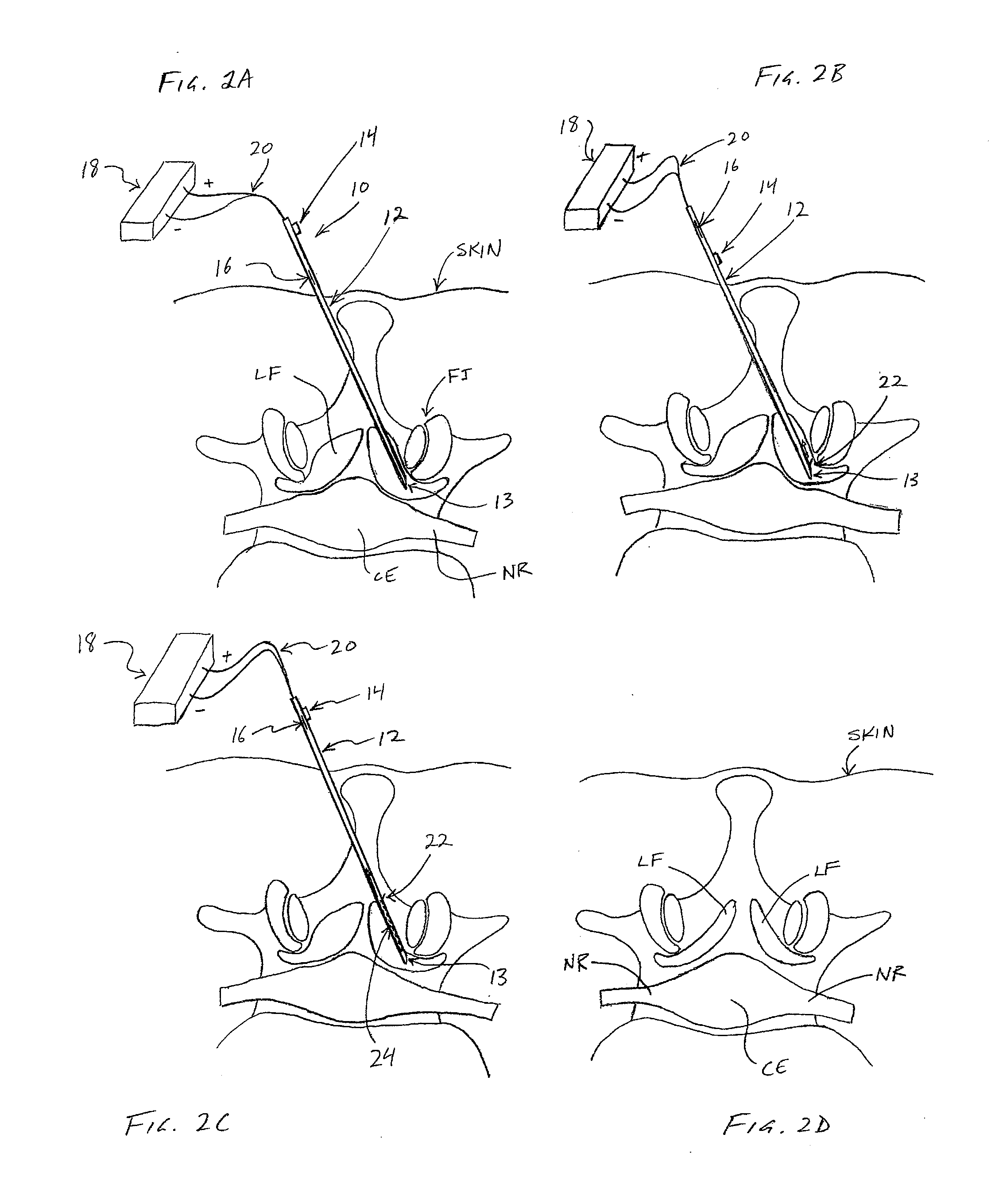Percutaneous spinal stenosis treatment
a spinal stenosis and percutaneous technology, applied in the field of medical/surgical devices and methods, can solve the problems of developing less invasive surgical methods and devices, posing many challenges, and often compounding the challenges
- Summary
- Abstract
- Description
- Claims
- Application Information
AI Technical Summary
Benefits of technology
Problems solved by technology
Method used
Image
Examples
Embodiment Construction
[0065] Referring to FIGS. 2A-2D, one embodiment of a method for removing ligamentum flavum (LF) tissue from a patient's spine is demonstrated. In FIGS. 2A-2D, a partial top view of a vertebra is shown, including ligamentum flavum (LF), facet joint (FJ), nerve root (NR) and cauda equina (CE). The patient's skin is also shown, although none of the anatomical structures, nor the various devices used therein, are necessarily drawn to scale.
[0066] In one embodiment, referring to FIG. 2A, a tissue removal device 10 may be advanced percutaneously through a patient's skin to position a distal tip 13 in the ligamentum flavum (LF) tissue. Device 10 may comprise a cannula (or “needle”) and in some embodiments may include an elongate shaft 12 (including distal tip 13), a first actuator 14 for extending a cutting member 22 out of shaft 12, and a second actuator 16 for moving cutting member 22 along shaft 12 to cut tissue. In some embodiments, cutting member 22 may be coupled with an energy sour...
PUM
 Login to View More
Login to View More Abstract
Description
Claims
Application Information
 Login to View More
Login to View More - R&D
- Intellectual Property
- Life Sciences
- Materials
- Tech Scout
- Unparalleled Data Quality
- Higher Quality Content
- 60% Fewer Hallucinations
Browse by: Latest US Patents, China's latest patents, Technical Efficacy Thesaurus, Application Domain, Technology Topic, Popular Technical Reports.
© 2025 PatSnap. All rights reserved.Legal|Privacy policy|Modern Slavery Act Transparency Statement|Sitemap|About US| Contact US: help@patsnap.com



